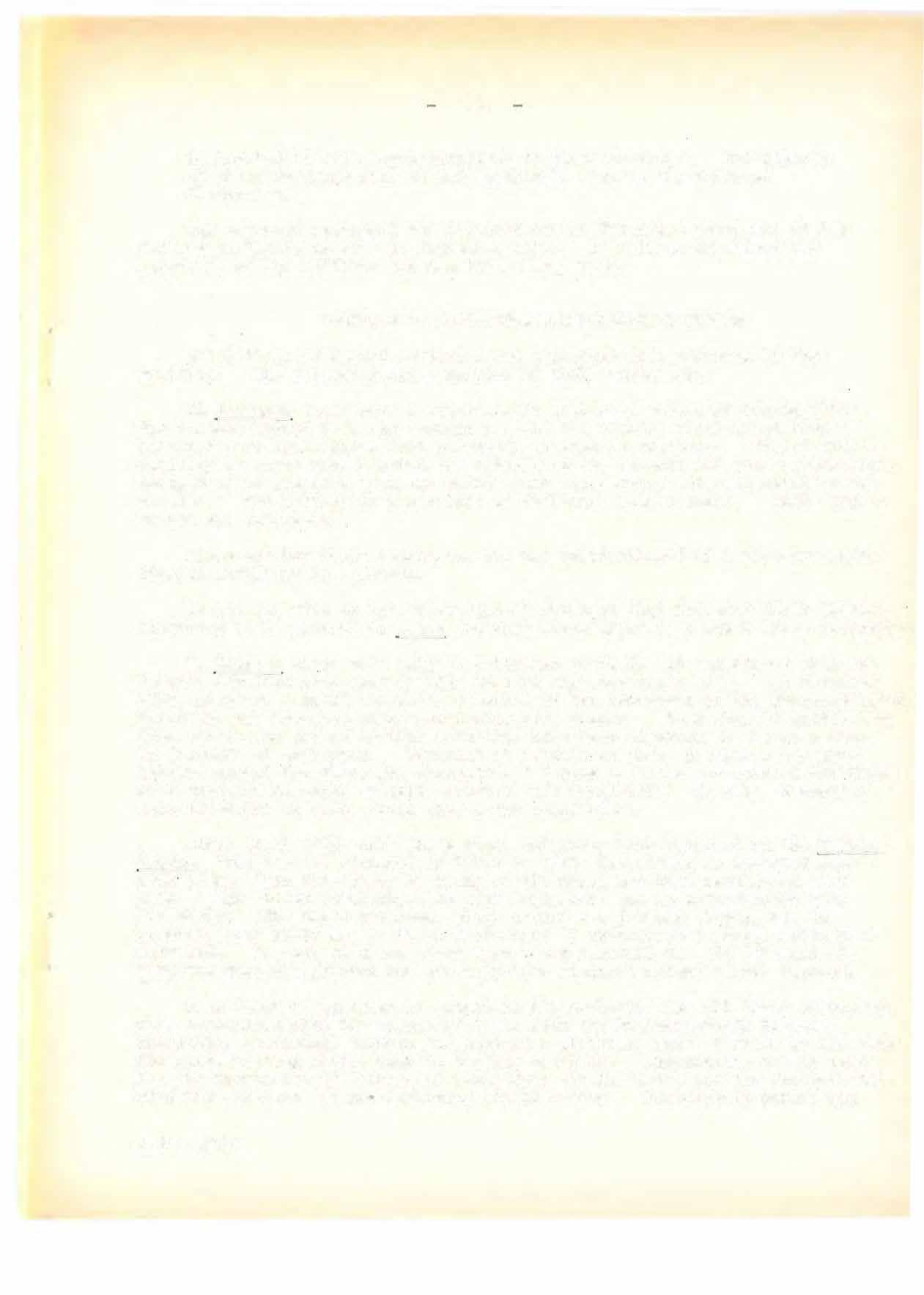
24 minute read
POSITION OF FOOT-AND-MOUTH DISEASE IN EUROPE
from 7th Session of the European Commission for the control of Foot and Mouth Disease (EuFMD)
by EuFMD
13
be invited to send representatives to these rneetings. The reports of these meetings will be made available also to the European Commission.
Advertisement
The proposed agreement was accepted by· the Executive Committee at its meeting in Vienna on 22 - 24 September 1959, It will be submitted for approval, at the XXVIIIth OIE Session in May, 1960,
POSITION OF FOOT-AND-MOUTH DISEASE IN EUROPE
Delegations of Member Countries and olJServers gave accounts of the position. The following are swnmaries of their statements:
In Portugal there were a considerable number of outbreaks during 1959. The disease spread from the eastern part of the country which first became infected from Spain where foot-and-mouth disease is enzootic. Strict police sanitary measures were adopted in controlling the disease and some vaccination, using vaccine imported from the Netherlands was carried out with satisfactory results. The country is again free of foot-and-mouth disease. Virus type A caused the outbreaks,
Plans are now being considered for the establishment of a foot-and-mouth disease institute in Portugal.
It was reported by the delegation of Portugal that foot-and-mouth disease continuel':l to be i"Jresent in Spain and that virus types O, A and C cause outbreaks.
In Belgium there were only 51 outbreaks in 1959g it was stated that the disease was less prevalent in 1959 than in any year since 1950, In November 1959, however, a small epizootic occurred in two prbvinces on the Franco-Belgian frontieri the invasion being apparently from France. Some 350,000 cattle have been vaccinated and no further outbreaks have been reported in the area simce 25 February of this year. Movement of animals in those provinces was prohibited except for those for slaughter� Typing of virus was carried out from each outbreak _ in which suitable material was available. In all, 16 samples were typed and in each, virus type A was identified.
Since .A,pril 1959 lands. . The disease ? only three small outbreaks have occurred in the appeared in February 1960, firstly in an isolated N etherfarm some 30 km. from Amsterdam, in young cattle vn1ich had been vaccinated only once. The second outbreak, also near Amsterdam, was in unvaccinated pigs and sheep. The third· outbreak ? premises· some 30-40 km. south of which occurred a few days later, Amsterdam: 7 unvaccinated young was on cattle were infected. In each outbreak virus type O was identified, All the animals involved were slaughtered and strict police sanitary measures were imposed,
From careful enquiries it seemed highly probable that all three outbreaks were associated with the �scape of virus from the Foot-and-Mouth Disease Institute, Amsterdam, through the Amsterdam abattoir, part of which is reserved for accommodating cattle used in testing vaccines, Precautions are in force for the prevention of leakage of virus from the Institute and the abattoir and stricter measures are now receiving consideration. Immediately before the
- F - 1;.015
outl;Jreaks occurred, work of the Insti tutc at the abattoir vms in progress with virus type 0,
A new institute will soon be available for foot-and-mouth disease work in Utrecht.
Since the last Session of the Commission ? has occurrecl in Denmark ? viz. in May 1959. A vaccinated three weeks previously was the only only one outbreak of the disease young calf in a small herd animal to show symptoms. The calf and the pigs on of which ever showed the farm· were slaughtered ? but not tho adult cattle none symptoms. It was accepted that the infection in the calf was derived from the vaccine. In f>enma:ck some 100,000 cattle are vaccinated annually in 6,uco-7,000 farms. Vaccine for this purpose is provided at a reduced price, Tho view was expressed that annual vaccination need not be continued in Denmark and that it was only when the disease was present i n some p arts of western Germany that vaccination i n Dcnmai·k was necessary.
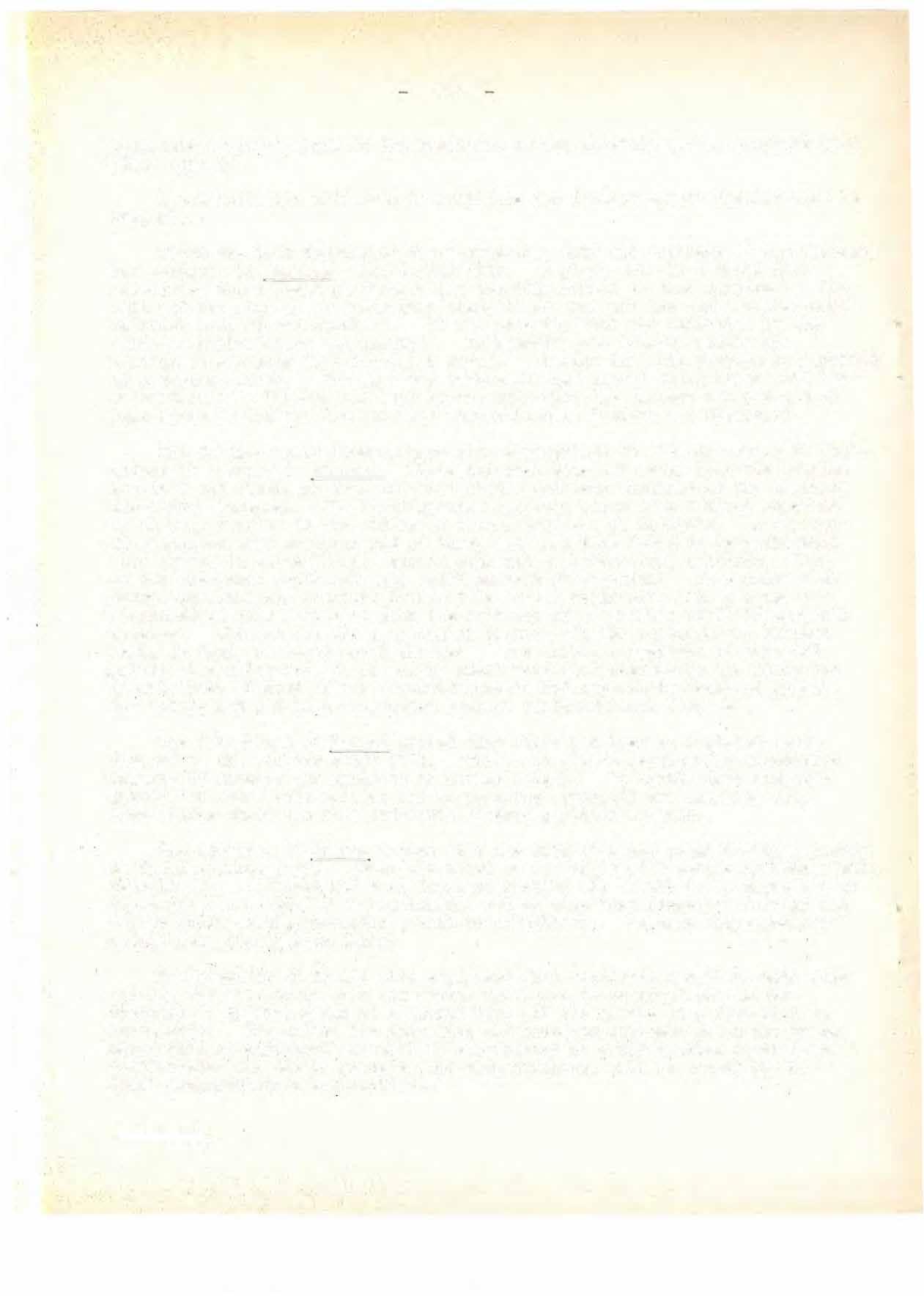
The delegation of Denmark gave some infor1-;iation on tho occurrence of footand-mouth disease in Finland. There had been some outbreaks near the Russian frontier and specimens from-infected cattle had been examined at the Lindholm Institute ? Denmark. The first specimen yielded virus type O which appeared to be very similar to tho strain of virus ? type o1? in Lindholm. A further 40 specimens were received and of them, only six were found to be pathogenic when tested in calves ? mice of the specimens contained J guinea-pigs and on kidney cell only small amounts of material. cultures. Most Somo samples of serum from Finland ? obtained from cattle some 3 weeks after the disease was diagnosed in them failed to show tho presence of antibodies of foot..:and-mouth disease. This raised tho q_uestion of whether all tlb.e outbreaks in Finland vvere 9 in fp,ct, foot-and-mouth disease. The clinical symptoms of infected cattle were uriderstood to be mostly small vesicular lesions on tho udder and temp�ratures of most of the infected animals had apparently rcmaincd .n?i�1al, The cattle had not boon vaccinated against foot-and-mouth disease.
The delegation of Norway stated that thore hac.l been no foot-and-mouth disease in the country since 1952. There arc strict regulations concerning imports of animals and products of animal oriBin. No cattle have been imported for some years and� as far as possible, products are imported only from places where tho foot-and-mouth disease j,osi tion is goocl.
Tho observer of France stated that the situation had considerably improved in France du:i�i ng 1959. About one third of the 18,000 ? 000 cat�le in France were vaQcinated. A decree had been dravm up whereby all cattle to be moved out of a· commune .would ha-v:e. to be vaccinated of the whole cattle. population would action had already· been taken. · ? and in some· "clepartoments" vaccination bo compuloory. In. some "departements" ·
The observer of France also explained that vaccination will be made compulsory_ for all cattle over six months which aro to be moved out of the district, · By thls means it is hoped that all the cattle on a·farm will be vaccinated. The ca ttlo for fattening and brcecling · purposes which are to bo moved will be eartagged and will be accompanied by a vaccination certificate. Certificates for cattle going to· the slaughterhouse will be issued by the local administrative authorities.
A slaughter ·policy has already bee·n carried out in Finistere and the establishment of a quarantine station in this "doparteoent" for live cattle to be exportod is being considered. Rogulations have also been issued concerning the types of vehi6los for the transport of animals, and for the disinfection of these vehicles.
In 1959, there wore some 6,000 outbreaks of tho disease. The position has improved further in 1960 ·when in January there ,,oro 289 and 135 in the first half of February. It Yvas expect0d that tho position wouhl continue to improve.
No foot-and-nouth disease has boon diagnosed in the Grand Duchy of Luxembcurg for tho past three years. The delegation appealed to neighbouring countries to do everything possible to control tho disease and said that Luxer.1·bo.rg would give any assistance to offoct control.
The position in Svri tzerland is that tho last case of foot-and-mouth disease occurred in July 1959. In 1959 there wore 13 outbreaks near the French frontier, caused by virus typo O ·and A. Strict precautionary measures are taken at the frontiers of the four neighbouring countries at each of which there is a considerable amount of tourist and other traffic.
In Italy, since Soptenber 1959 9 whon a report was made to the Commission's �ecutivo Cornmittee 9 1959 - 755; November the following 1959;.. 11 073; nur:1ber of outbroaks had occurredg October Decomlxlr 19:j9 - 1,4909 January 1969 --2�318; February 1960 - 1,948.
was During this found in 522 periou (35.95 1,542 s�ecimens had· boen exaninedg virus type 0 poroont), · t;ype A�i:n,9l8 (63.91 percent) and type C in 2 ( 0.14 percent). Virus type A, which 11as most prevalent in December, January and February, seemed to have some difference in antigenic capacity than other types A, al though this could not be shown by compler.1ent-fixation tests. This observation seened to explain tho exceptionally rapid spread of the disease in January and February.
Trade and traffic in animals is responsible for much of tho spread of tho disease in Italy and reduce the efficiency of control based on police sanitary measuresg vaccination is only carried out .. on so□e of the livestock.
Cattle for fattening and breeding imported into Italy are vaccinated at their arrival timlcss vaccination has alreacLy been carried out in the country of origin. The disease has, on occasion· , hov✓evor, been diagnosed in cattle certified to have been already vaccinated. All ii�ported cattle are placed in quarantine for 1 - 3 days before being distributed. An excopticn is made with cattle from the Netherlands, Swi tzorland and Yugoslavia ,vi th which countries special conventions have been nade.
On 19 October 1959, foot-ancl-nuuth disease occurred in Lmver Austria near the Czechoslovakian border after a period of over two years' freedon in Austria, and was probably introduced froo tho adjacent part of Czechoslovakia whore there was a considerable amount of foot-ancl"--nouth disease at that time. Virus type O vms diagnosocl in both regions. This outbreak in Austria concerned six herds� comprising 31 cattle, 104 lJigs and 12 goats, all of which wore slaughtered. Vaccination was carried out along tho

frontier and in zones arouncl.·each disease centreg soDo 75,000 animals were vaccinated, the vaccines used being either bivalent or trivalent. Austria was declared free on 5 January 1960 and no outbreaks have been reportocl. since then. The vaccine was prepared in Austria and gave good results. Facilities in Austria are adequate to prepare necessary supplies of the classical types of vaccine. Tho dose is 8 ml, and t he cost is 550 Austrian shillings per litre.
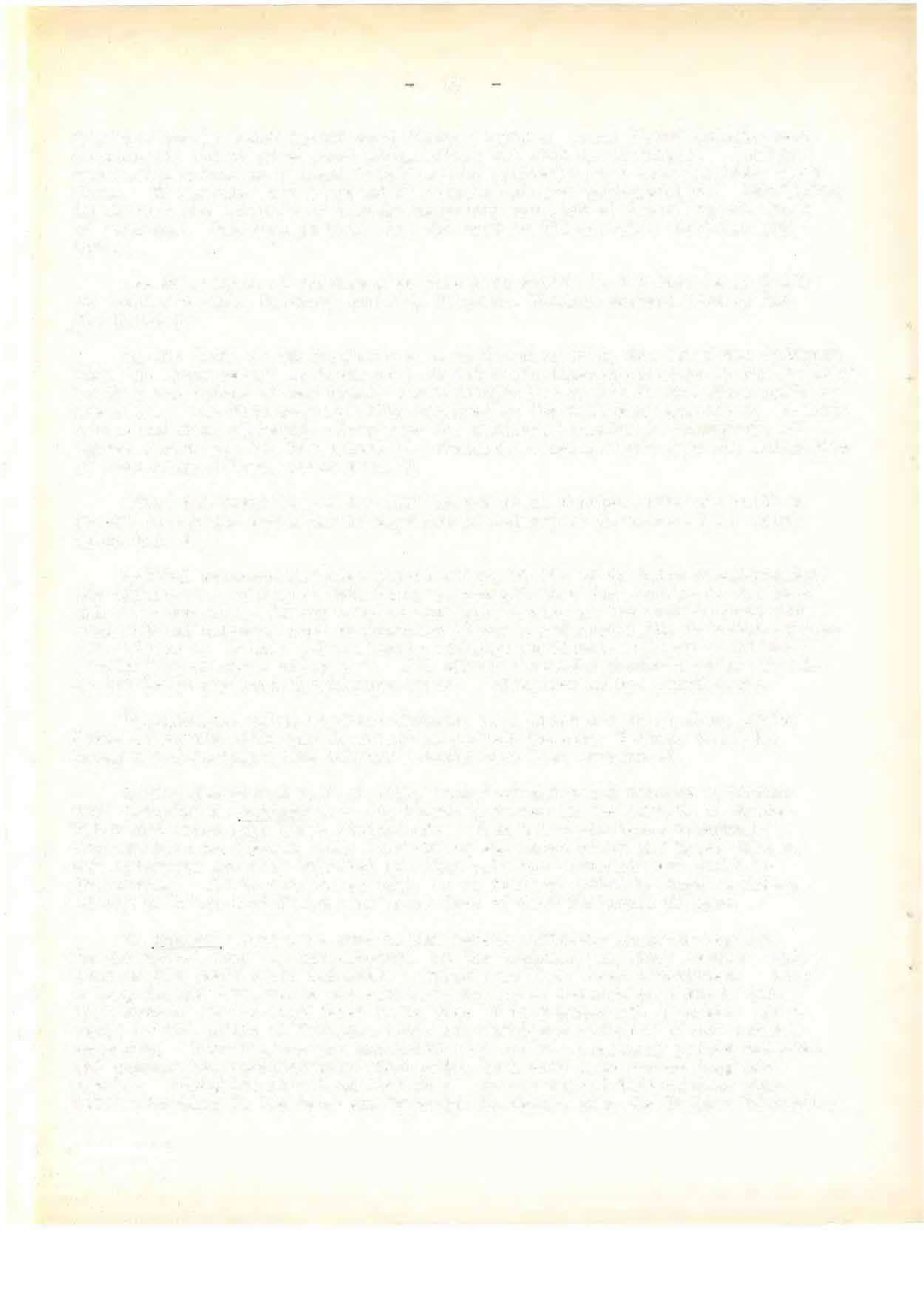
The delegation of Austria gave sooo infor□ation on the disease position in Czechoslovakia, Hungary, Runania, Bulgaria� Poland, Eastern Gcn.1any and the u.s.s.R.
On his visit to Czechoslovakia on 12 Novenbor 1959, Dr. Gaier was inforned that the first recent outbroak of foot-ancl-r:10uth clisease occurred in the district of Brno and before it vras found, the inf0ction had spread to six other parts of the area. Tho disease eventually appeared in tho :following districtsg Hihlava (6 coununities, 17 horcls ? virus typo o), K0snice, SlovRkia (1 coomm.nity, 27 hercls9 virus type 0-t Bratislava (1 comr.mnity, 1 herd, virus type O); Budejovico (1 co□munity, 1 hord 9 virus type C).
After the beginning of January there vi-Gro no further outbreaks until a re cont occurrence again in tho district of Budejovi ce ( 1 comrauni ty 9 1 herd, virus type A).
Control moasuros included notifi�ation, visits by district veterinarians, tho application of strict veterinary polic0 ooasures (�uarantine of the herd and the cor.1r.mni ty), taking samples and virus typing in tho vaccine-producing Insti tuto at Teresin, ring vaccination in two zones around the infocted m:mtres i.e. (1) up to 10 kr:i.- all rw;-iinants and pigs vaccinated; (2) up to 20 kn. vaccination of sheep and goats. All affected ani□als except pigs in tho infected herds receivocl hyperimr.mne sorun. Slaughter is not cor.1pulsory.
Vaccination, using bivalent vaccine, is carried out in an area, 20- kn. deep, of cattle along the frontiers of eastern Gor□any, Poland� U.S.S.R., Hungary and Austriag some 800 9 000 aniraals h ave be0n vaccinated,
During the second half of 1959, so□e foot-and-mouth disease outbreaks vvere reported in Hunga:i;x near its Rumanian border in tho country of HyjduBihar and virus typo O 1;ras identified. Fron a long-distance telephone conversation un 3 March 1960, inforuati::m ·was rocei ved by Dr. Gaier that no new outbreaks had been reported and that only ,mo comr:iuni ty was still in quarantine. It is considered that 9 if no further outbreaks have ·occurred, it nay be taken that Hungary is again free •.lf foot-and-nouth disease.
In Rumania there were some rather severe outbreaks in seven rogions in the oastorn part of the countryg at tho beginning of 1960, however, only four of thorn were still infected. Virus type O has boen identified. From a long distance telephone conversation, Dr. Gaier loarnod on 8 March 1960 that Rumanitt is now considered to bo froe cf f,)ot-and-nouth disease. At a visit in the middlo of February 1960, Dr. Gaier was infor□od of the control measures. They include tho application of strict veterinary police measures and quarantine ? together with vaccinat:1011 in a "irido zone surrounding outbreaks. Slaughter is not carried out. It was stated that vaccine prepared according to tho Waldr.1ann technique is issuecl frori1 tho Pasteur Institute,
Bucarest. Vaccirw is also ubtained fr: u tho Island x? Rieos.
In Bulgaria, foot-and-@�uth disease was present in tho oastorn part of the country in 1959 and alsu during the first □·,nths �f this year. It appears that
tho disease is n:;w under control.
At the end of 1959, Dr. Gaior visited.Eastern Goroany, including tho island of Rioms, Poland and tho U.S.S.R. Ho f ,und that in all tho throe c,:,untries, foot-anLl-1,1uuth disease was still pro sent hut \"/BS nu l<>nger a serious Donaco. Conploto erac'i.ioa tion r.ras expected in the near future. Tl10 cuntr,Jl moasuros wore sir:.1ilar t,., those dcscri bod in the otllor c _ ,nntrios in oastorn fur0po.
Tho clelegati1.;n of Yugoslavia reported tl-1C1t ,,utbr0aks 0f fvot-antl-r.1outh disease 0ocurred in Nover'.lber 1959 in 7 farus in Kladovo on the Yugoslav-RUTianian border, clue to virus typo o. Tho infoctotl fa1°r:s i7oro near a store which
supplied f'uroign boats. The 27 cattle inv ...,l vecl ,.wro slaughtorod. J3otwoon
1.3
ancl 27 l\Tc.,vonber, 34 oth0r far:i:.is in the: vioini ty and 9 farr.1s in J3rza Polanka crn;1Emni ty became infected i 1 38 shoep, 2.32 pigs ,:i,ml 27 ca ttlo ;:roro slaughtorocl. Control L10asuros 1,,,,ero organizecl at on� n;1c'c votorinnrians woro draftocl into tho infoctoul. nncl_ neighbouring aroas in grvups nm1. 'J·)r!cocl so that t,nly cine group worked in tho infected aroa, □aking daily ins�octions of ani□als a�d applyins veterinaisy polico uoasuros ancl disinfoctiun. A soc::mcl g1
°
oup in thu neighbvuring areas vaccinated all clovon-h,Jofod aninals bot;inning at tho periphery of a zono around tho inf0ctod area. A third gr�up inspected �ni□als outside this zone. All this work, carried cillt simul tanoously, proved highly satisfactory arn1 brought tho cliseaso rapidly under control.
Movoaont of people, aniuals ancl vehicles was prohibited and was also contr"llecl by tho 1,1ili tia in tho stnrountlint; aroas. Fror,1 13 Novonber to 4 Decornber 16,467 cattle �nd 2.3,294 sheep woro vaccinatocl.
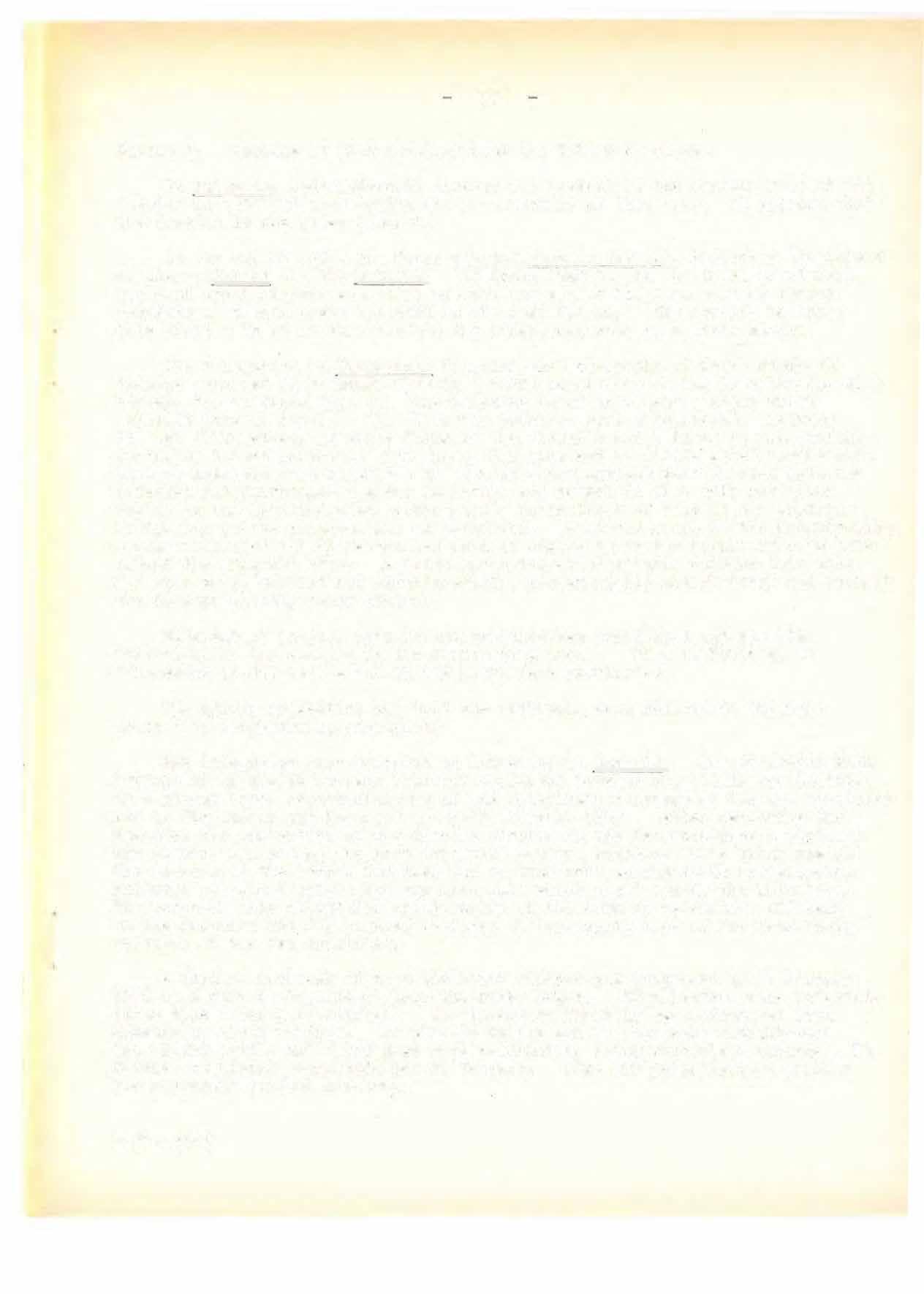
The s trong suggostiun was that tho �utbroaks woro rolated to tho boat crews fr0r.1 neighbouring countries.
Tho delegation alsu reported 011 a nceting in Rtmania.
In accordance YJi th Article 22 of tho Votorinary Sanitary Agroouont ootvrnon Yugos'lavia and Ruuania of 4 August 1956, roprosontativos of tho votorinary sorvicos of tho two countries net at Timissoara and Bucarest on 15-19 Dece□bor 1959. After reviewing tho r.ieasuros for provonti,.:in of tho clisonso ad,.,pted in tho tw,, c .mnti0ies a protocol was signed, concerning tho most imp0rtant control r.1oasuros to be takon against tho disease on tho Cl,Dn0n fr::,ntier and on transp._,rt arrangouonts for anir:1als, products of aniE1al origin and raw Datorials which nic:;ht ocnvoy tho infection. Tho p:
c
otucol also alluv,rs fvr cuorcli1ntion of tho rrork uf votorinal"Y offioors on tho fr .ntier aml for regular nootings ,:.,f roprosontativos of tho votorinary services of tho twu c�untrios.
A further outbreak of foot-anc.1-:-.iouth tlisoc.•.s:,· was dic.c;n._)sod on 11 January 1960 on a farr.1 in Yugoslavia noar the river Boc;oj. Fi vo hoifors wore infected� virus t;ype O being identified. The inf'octi0n probably was inti"vtlucocl fror:i Ruraania by ri vcr traffic. In all, 85 cattle and 12 pie;s wero slaughtorocl and 12,620 cattle and 1,250 pigs wero vaccinatocl, using nonvvalent vaccine. No
further ,mtbroaks occurred .a.ftor 21 · January. Sono .300 veterinarians applied
tho nocossary cantrol □oasures.
- F - t�015
An sttoupt t,) arre.ngo a r.10otinG , ... i th vot.:.:�i:L:tirnr., i: 'O, 1 I 1,:,;ii·;,·,:,_�- h;_: r, ·10:G fLl'G boon successful.
At a Mooting with BulBarian veterinarians in Bolgrado in February 1960 ooasuros ·,voro olab,Jra tecl to prevent infection f:ron Turkoy and Bulcsaria. They include vaccinatiJn in fr�ntior areas.
It Ylas stn teLl that spociuons fron all prinary outbreaks aro oxat1ined for typos of virus. Dr. Gnllc,way intinatNl his 1:1illinc;noss to oxaninc any spociracns presenting uifficulty.
In the Uni tecl Kin";dora, there were no outbreaks in Scotland or Northern Ireland in 1959. In Englancl and Wales, however, thoi·o vrnro 45 outbreaks of which 9 were prinary and 36 secondary. In 6 of tho lJrioai·y .. mtbroaks there was no spread� fre;m 3 i hovrnvor, ively. Tho 29 secom1a:cy there were 49 3 , utbro8ks aroso an.cl 29 socundary outbreaks, because uf infected anir;ials rospoctpassing thruugh narkots. The usual conploto slaughter policy in all its details was always carriou out.
Typing 0f thG virus in all ,.,utbroaks was r:.iado.
In 1959 tho typos of virus in the pri□ary uutbroaks woro 0 in 5, A in 1 and C in 3. It was f,)uncl that typos 0 and C 1:rnro tho causos of outbroaks bGliovGd to bu asscciat0d with imported uoat ancl t;n)o A Hi th tho disoasG balieved to havo been introduced fro□ Franco.
In 1960 there havo beon 7 pririmry . ,utbroaks i fro1:1 5 of nhich it was known that n:) socunc.1o.ry outbr0::1k had occurred. Fror.1 ,:me, thoi·o vms one secondary outbreak and it is yet tuo early to sa;y whether any sproad fI· r:i the other outbreak has takon place. All the 0utbroaks irr 1960 wore caused by virus type 0 except ,mo in vrhich typo SAT II vms identifiocl. This .,utbroak occurroc1 011 a farr;1 within about a uilo of tho Pirbrie;h t Ins ti tuto. Fi vo cattlo woro showing synptoDs when foot-c1.ml-r:1outh disease was diagnosed on a faro. Tho 13 cattle and 9 pigs on tho farm were slaughtered. BGcauso thoro was a chance that another farn nay lrnve become infected, the 16 cattle on it Hore also slaughtered. No spread occurred. 'Throe vvoeks aftor tho clisonso was diagnosed restrictions were ro□ovod frora tho area. It was accopted that this outbreak was duo to an escape of SAT II virus fron the Pirbright Insti tutG. There was DC; eviclonce of direct contact but it seoned possible that the virus escaped thr:,ugh vonti18 tors in a barn ccntaining cattle infected i;1i th tlrn virus and was convoyed to tho infected farr,1 by pigeons which wore prevctlont in a groon crop near the Ins ti tuto. A full enquiry was r.1ac1o and a report, which is available, vms · issued. Certain further precautions are beinG taken but it is to bo noted that the institute has boon in existence f:ir 26 years, 11,orkines with different types of virus and that this is tho first occasion on which there has boon ovic1ence of a probablo es capo of vii0us. This occurrence i v,hi ch has no roal sie;nificance bocauso ')f tho moth.1Lls of oradicntiun practised in tho Uni tod Kingdom shows tho clanc;er which wc,ulcl attoncl tho hanl1line of exotic, typos of the virus in lab,:;ratorios in Europe where the olal)orato precautions taken at Pirbright arG not in forco.
No foot-ancl-;.10uth disease has occurred in Ireland since 1941 • It was stated that this fr'oedom is clue to tho precautions taken a[;'ainst the introduction of infection ? tho taken in Great Britain in geographical si tuatL,n of t}10 the control of the clisoaso. c,iuntry and the action

- F - 4015
It vras pointed out that 9 policy, foot-Rnd�Jonth disease provi .us to tho intr xlnctL,n uf th0 slaughter was prevalont in Groat Brit6in anJ Ireland. ·,vi th the operatic.n of the slaughter policy 9 tho Llisoaso nos br�.ught under control within a fe1✓ years. Tho successful ,.1easures 9 -.;uich dic1 not inclUL1e vaccination, should enc .u rage othor countries in �urvpe to adopt such a slo.ughtei· l)□licy whorever practicable. Tho r,10st recont infuruati'.:m conc0:;_0ning f .,.:it-o.nd-nouth disco.so in Turkey and Gree co 1,7a,.s gi VGn b;;r Dr. Foeed by. In Turkc:y9 during 1959 nftor a c0r.1parativoly g_uitit pei•iod� sooe 3 0 0 breaks involving sor.10 6009 000 rur'.li112,nt s yrore r8portoc1. The outbreaks in 1959 seemed tu bu a cuntinuo.tion of tho diseasG outfrom tho 1957 outbreaks which sproo.d fror:1 the eastern pc.rt of tho country. At the bc3inning, the dise�so existed in a mild for□ anQ specicons suitnblo for typing were difficult to o·btain. In all, 37 sar.1:ples nere typed in 1959 and of them 34 ch.11)licato samples vrere examined at the samples, 28 were ic1ontified as virus typo Pirbri{s'ht Institute. o, 1 as typo C cmd 5 Of were the 34 negative. Arrnngor.1ents have noV✓ been raade for more extensi vo typing and 3, courso of instruction in collecting sar.1plcs is being held in Anlrnra. Veterinary and military control is cunstantly carriod 0ut along tho southern and eastern bordors of the country and vaccination is practised in the villages on tho Greek ancl Bule;arian frontiers in 'I'Lu·koy in an area, 15 kr;i. deep. Vaccine is being produced in a t0i.1porary laboratory near Ankara, some 100,000 doses aro expected to be available in 1960 and soae 500,000 doses in subsequent years. At the present ti□e vaccine is prepared from natural virus and sor,10 \Tork is in pro gross on tho cul ti vati .:m ,,f the virus on kidney cells �nd on uodifiGd viruses. It was stated that tho vaccine prepared i n Turl:oy is giving s atisfactory rGsults in tho field. In Grooce, there was 1 outbreak in Soptc□bor, 1 in October and 5 in Doco�ber 1959. Each was associated with tho iLlportation of ccttle frora Turkey and in all of thr:>P -:-::..rus type O v1as iclentifioc1. Fen' a numbor of years, foot-aml-1110u-ch L1isoase ho.s b0on vrnll c,,ntrollocl in Groec0 by tho application of vot0rinary police □oasures ancl Llass vaccination. No roport of the position in tho Goroan Fodoral Republic was a vailable but Dr. Vi ttoz, following an exm:iinatiun of the OIE Monthly Circulars, gave an accuunt of the occurrences of the L1isease in 1959 arnl the first part of 1960.

In 1959, the nw.1ber of outbroaks was�January April July October 1 2 � Febrwuy 2; Ifay 22� .Aue;ust 1 • ' November 1 � lfor.ch 6
1 2 � Juno
7 2· � Soptcnbor 2 1 t Doco1;1bor - 58.
- F - l;.015
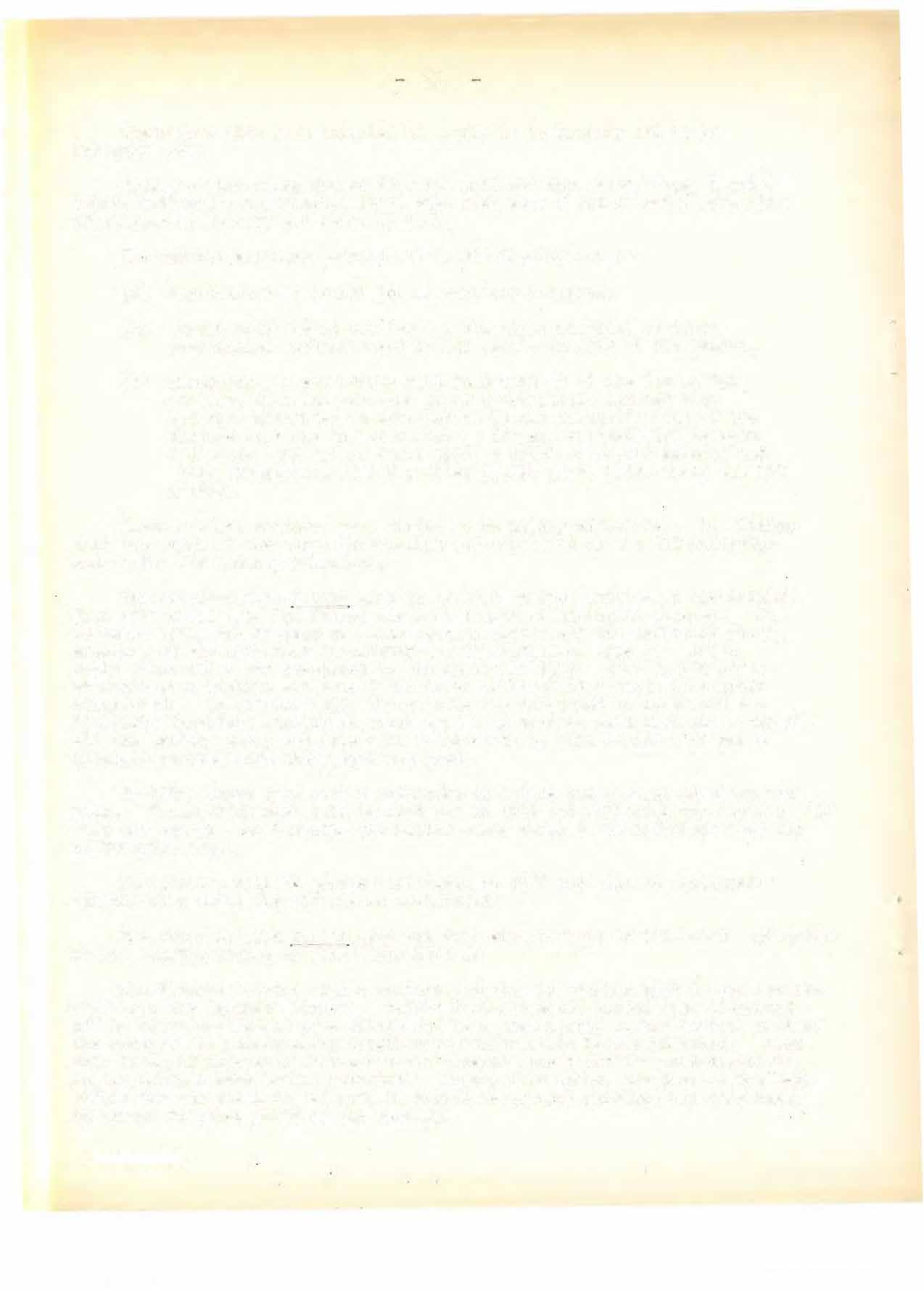
Thora have also been re_partod 33 outbreaks in January and 14 in Fobruary 1960. Typing o:f tho virus showed. that in caused outbreaks; in JJoconbor 1959, tho April typos and I�ay 9 1959, type13 A am1 C wore O and A 9 which wore also i dentified in January anu February 1960. Tho control measures carriocl out in tho Republic are 3(a) Applicntion of strict p_lico sanitary □oasuros; (b) V3ccination, using bivalent or triv□lont vaccine, in zones surxuunding outbreaks nnu. of all cattle in s0□0 of tho Landor. (c) Slaughter, in accordance with Paragraph 49 of tho Law on Epizootics, whon tbo outbreak is cJf a clofinitoly limited typo and when slaughter is oxpectocl to result in eradication of tho disease f1°or.1 tho infected area, I t vms reported that bottrnen 1 January 1956 and 30 April 1958, a total of 36,413 aninals had boon goats) slaughtered . (7,142 c�ttlo, 27 7 342 pigs, 1,846 sheep and 101 Those contr0l measures wore stated to bo highly effective, JJr, Vittoz said that r.mch of tho nbuvo inforr.1atio11 v1as containocl in tho OIE Bulletins and in the DIE monthly circulars. The observer from Cyprus gavo an account of tho position on tho island. Frou 1917 until 1956 the island was froe from foot-anc1-L10uth clisoaso. In NoveL1ber oxai:iined 1956 9 tho diseaso was c1iasnosec1 at tho Pirbright Insti tuto:,: was in cattlo c.nc1 identified as tho infoctine; virus, typo A. Large scale vaccination was practised in tho spring of 1957: some 35,000 doses of monovalent vaccine ancl so□o 5,000 closes of bivalent vaccine from Italy being µsod. In October 1957� the disease was cliagLosed in sheep and the Pirbri0ht Institute i dentified virus type O in sai:1plos sent from the outbreak. All the cattle 9 sheep bivalent vaccine from and pigs were vaccinated; Italy that was used. on this occasion it was a In 1959, there were only 2 outbreaks in cattle and several in sheep and pigs. Vaccination was aBain only one animal - an 8 months carried out old heifer in 1959 and following vaccination 9 onl was found to be infectedg that was in November 1959. Vaccination will be carried out again in 1960 and will be continued periodically until the diseaso is eradicated. Tho observer from Israel gave the following account of tho recent epizootic in his country caused by virus type .Asia I� The c1isoaso started with a serious outbreak in October 1959 in on0 settlement near tho Lebanese border. Before foot-and-mouth disease was diagnosed at tho above settlement somo calves had boen transported to the central part of the country and subs'dc1uently neighbou1°ing dairy herds became i nfected. From this focus of infection foot-and-mouth diseaso spread and four sub-districts in the central area became infected. During four vmeks, tho disease was kept within the central infected axea by strict veterinary measures but then began to spread t o other parts of the country.
21
The disoaso vras q_ui to so1�ious ospocially amonG dairy cattle. One of tho characteristics of infection with the Asian virus was the extensive lesions on t11e udder Ythich o.ften loolrnd as if it hall boon c1.ip1Jocl into boiling water. Tl10 virus was also vory pathogenic in sucklint; yics in which there was a mortality of 1007;� it was less pathoc;onic in sl1Gop,
Israel had no moans at her command to control this epizootic caused by an exotic typo of virus. First, a slau3htor policy cannot bo applied in Israel and ? as informed by FAO, no vaccine against tho Asian type of virus was available in any countr;y-. Howovor, some e.:::poriJnco lrn.Ll boon gained in Israel of the value of th0 ogg'-mocUfied Asin I t;ypo of foot-arnl-mouth disease virus as an immunising ngent. In June/July 1959 ? 21 cattlo -,7oro vaccina.ted at tho Veterinary I11;.1ti tut0 in Israel vri th tl1is modifiud viru,s of tllJ .\Gian typo. r_[lhese vaccina:tuu. cattlG were kept together with 40 normal cattle and at the end of October 1959 foot-ancl-mouth disease entorod thi:3 grou) of animals. Out of the 21 vaccinated cattle, 18 iJroved to be completoly protected ancl 3 rc2.ctecl in a mild form, while all tl1G 40 non-vacoinateu. cattle contracted serious foot-anc1.-1:10nth disease. It v1as, therefore, decided to carry out a field trial of tho irnmunisine; vnlue of the modified virus. Vaccination was started in tho beginning of November o.ncl was first carriec1 out in already-infected sottlomonts within tho infe•cted area. (A settleErnnt comprises 20-200 herds �,7ith an avernge of 15 cattlo.) When in such a settlomcmt ono or more horcls became in:foctecl, tho rest of the herds were vaccinated. As the first oxperimonts showed satisfactory rosults, tho experiments 1,,rere extonclocl and modified virus was also used in non-infected settlements. In all ? some 87,000 cattle were vaccinated with this vaccine.
As from 28 December 1959, another Jdm1 of vaccine was also used in the field� kidney tissuo culture virus vaccine, prepared in tho classicnl v1ay by adsorption of tho virus to ahunj_nium hydroxide anc1 then inactivated v;ri th formalin. With this vaccine some 609 000 cattle noro vaccinatocl.
At tho middle of Fobrunry, vaccination of all tho graded herds has been comploted. The ungradecl herds remained unvaccina.t0d anll disease continuocl to spread in them.
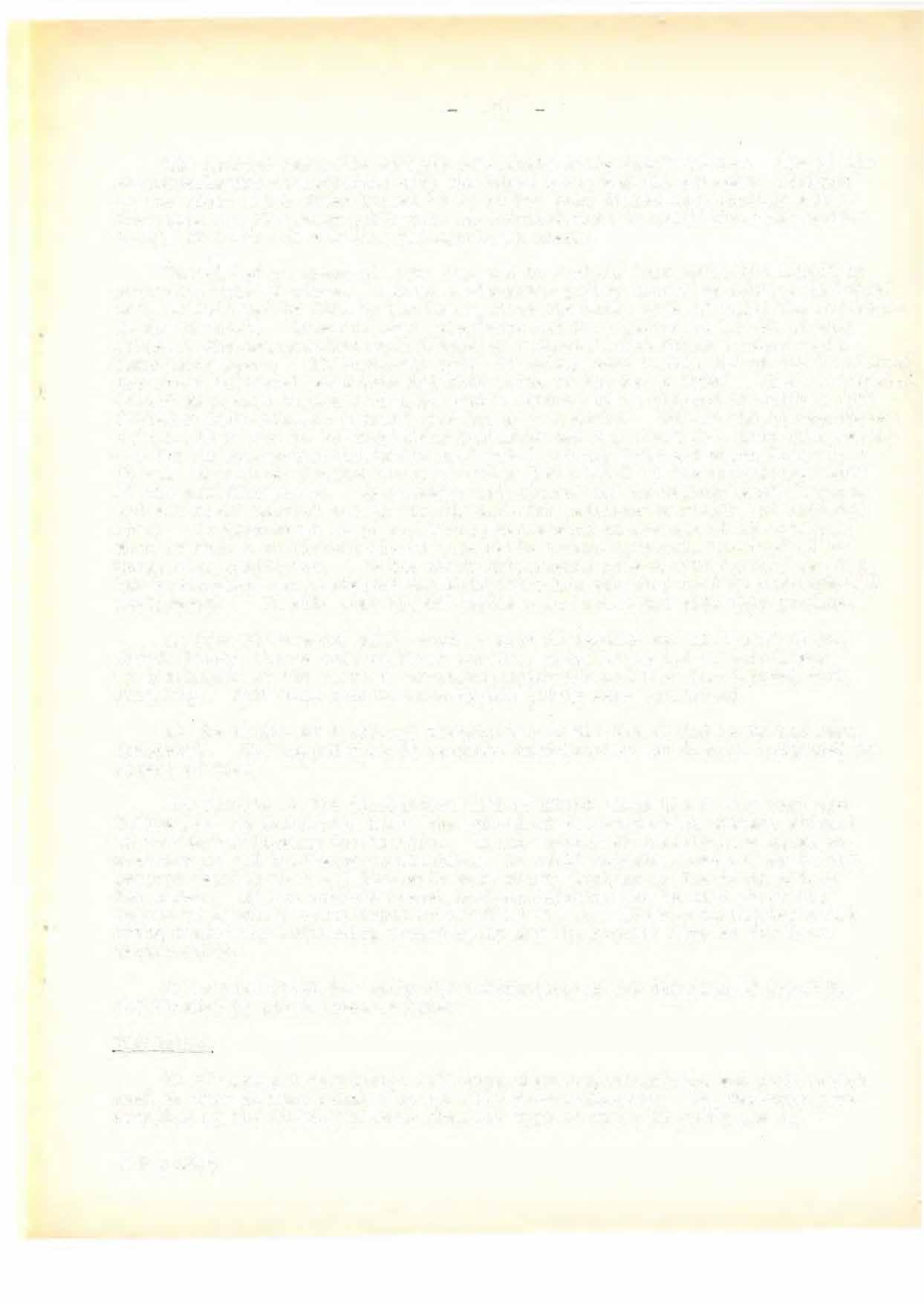
The results of tho vaccination with modifiod virus has so far boon tho followingi In vaccinated hards the spread of foot-and-mouth disease stopped in 6-8 clays following vaccination. Youne; vaccinatec1 animals have shoYm no roo.ction at all following vaccination; in adult animals, hovrovor, up to O. 5 porcent reacted in 3 - 7 days -.Yi th some slight lesions in tlle mouth 2.nd on tho udder. At tho prosont stugc, nothing dofinito can bo so.id about the degree of immunity established by moclifiecl virus. Tho vaccinated hards are 10�11� tested· for antibodies perioJioally an� tLu rosults havu so far been satisfactory.
It is also still too early for information on the duration of inmmni ty1 established gy inactivatod vaccine.
Discussion
In the general uisoussion following thoso reports stress was laid on the nood to type as m2.ny samples as possible from outbreaks. Dr. Galloway gavo examples of the finding of more than ono type of virus in outbreaks in
- F - 4015



